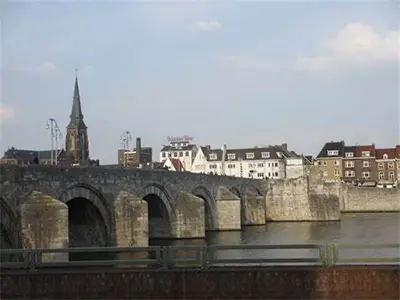Maastricht: Centuries-old City in the Netherlands
Permanent settlements in what is now Maastricht date to Roman times, to the 1st Century B.C., although evidence of previous Celtic influence abounds. The Roman name of the settlement was Mosae Trajectum. No less than the Emperor Augustus ordered the construction of a bridge over the River Maas and a castle to provide protection for the settlement. 
As was the case with many other Roman and elsewhere European places, Maastricht embraced the new faith Christianity, founded (the story goes) by the later saint Servatius. The succeeding churches' announcements of accumulating holy relics guaranteed a great many visitors to the city. Throughout its subsequent history, Maastricht often struggled between masters. In the 13th Century, it was the Duke of Brabant and the Prince Bishop of Liege sharing control. In the 16th Century, it was the Holy Roman Empire and Spain (two sides of the same coin) giving the orders. Although the residents of Maastricht gallantly threw off the Spanish yoke for a time in the 1570s, the Duke of Parma and his well trained and well financed soldiers held sway for five decades. The city proved a favorite target of armed struggle during the late medieval wars of religion, operating under French control a handful of times. One highlight for the Dutch was the rule of Frederick Hendrik, Prince of Orange, in the 1630s, bringing the city into the Dutch States-General for a time. Much more common was French military successes and occupations, from the expansion-minded policies of Louis XIV to the revolutionary fervor of the French First Republic. The city joined the newly formed United Kingdom of the Netherlands in 1815, functioning as the capital of the Province of Limburg. The Belgian independence movement, in 1830, did not encourage Maastricht to join the new country, despite the city's boundary's being within what was nominally Belgian territory. The end of that century brought prosperity in the form of pottery and other industry associated with the Industrial Revolution. 
Maastricht, like the rest of the Netherlands, avoided in large part the ravages of World War I. The next world war, however, was different: German forces steamrolled through the city on their way to attacking France. Allied liberation forces secured control of the city in 1944. Maastricht grew in fits and starts in the latter half of the 20th Century. One highlight was the 1992 Maastricht Treaty, which led to the creation of the European Union and the euro. |
|
Social Studies for Kids
copyright 2002–2024
David White




